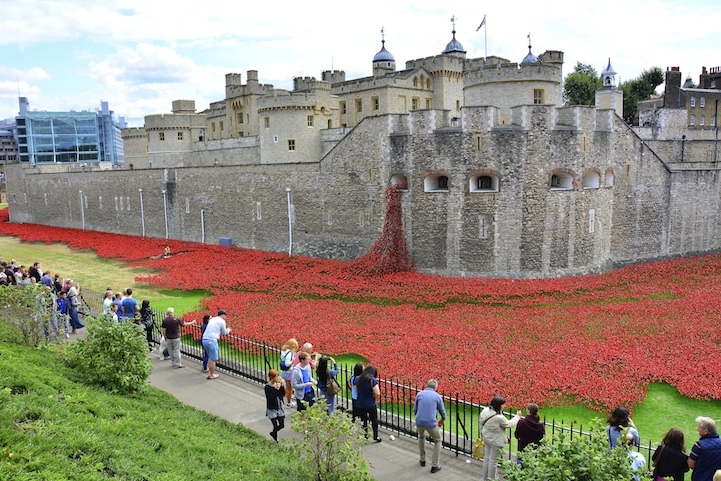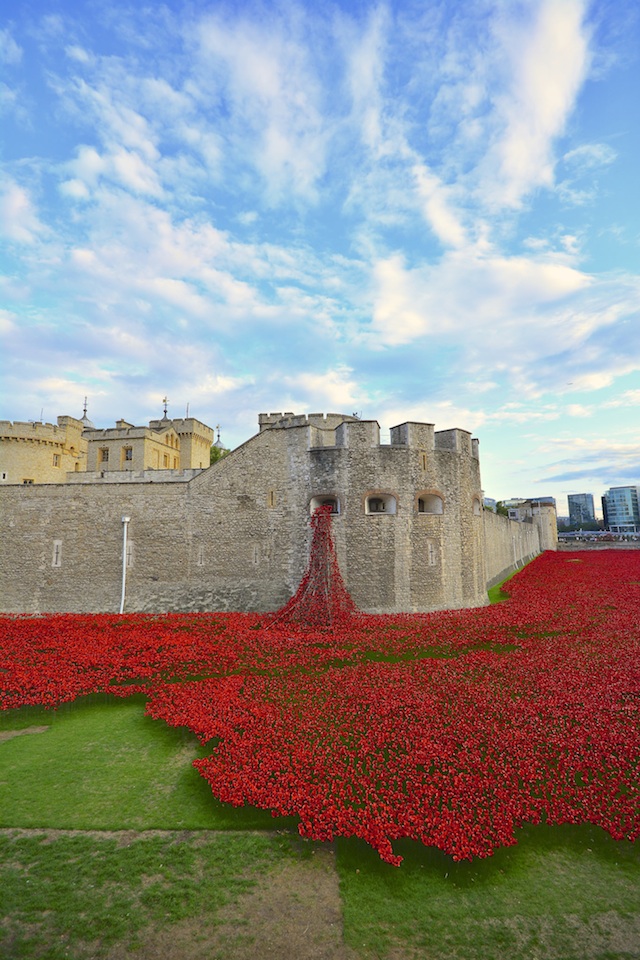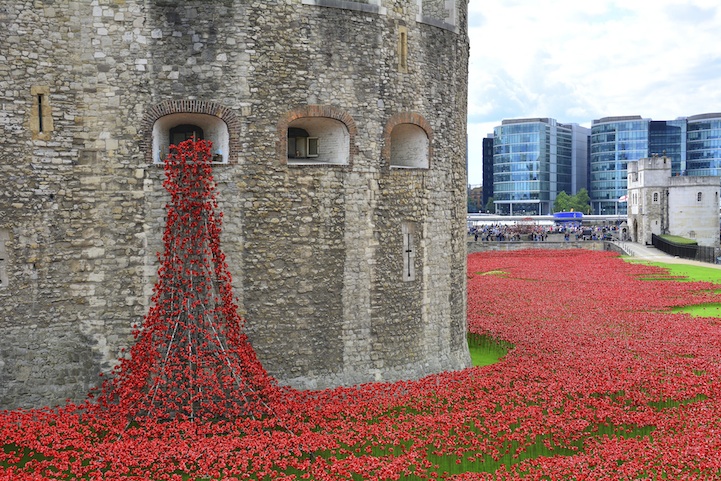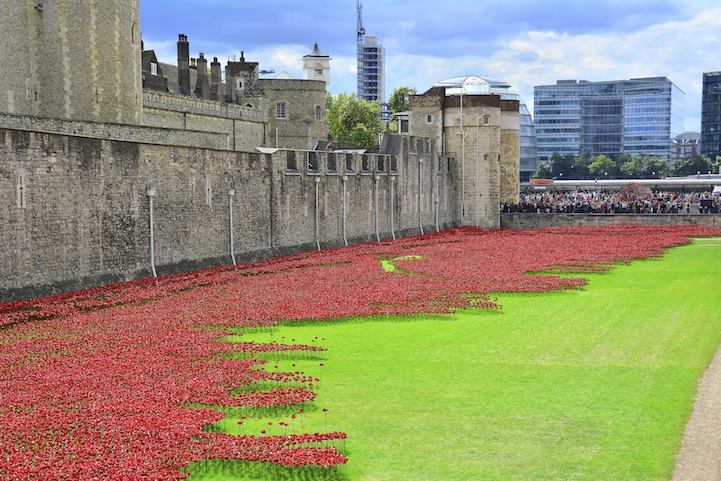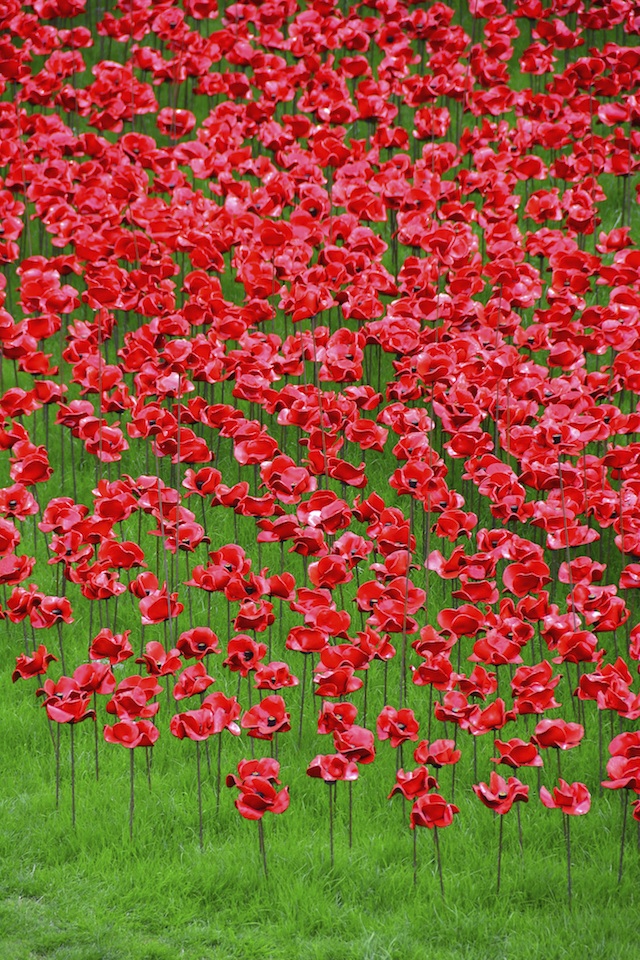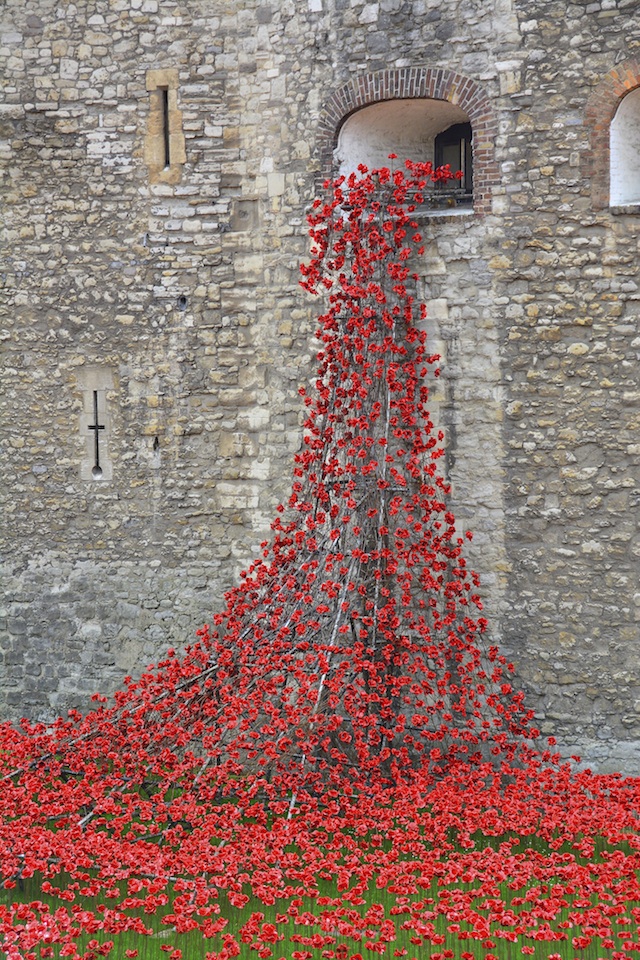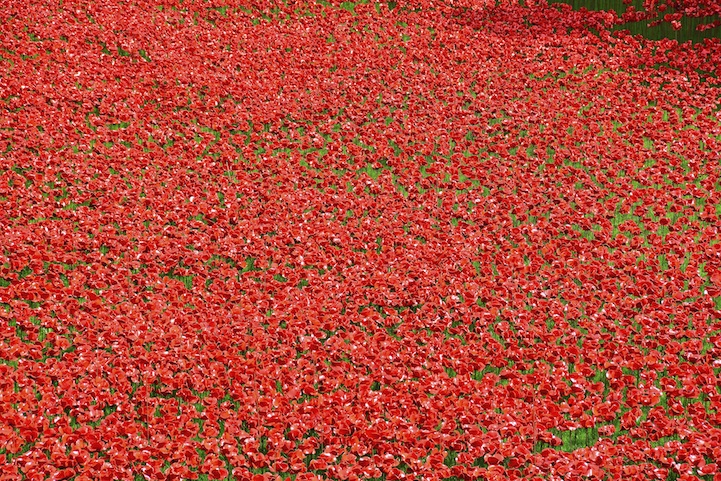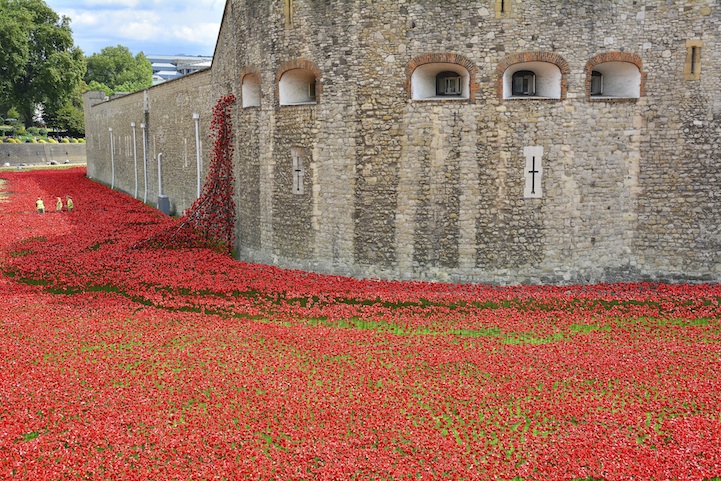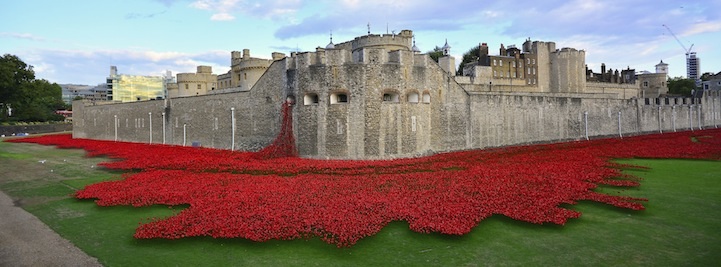London's 'Blood, Swept Lands and Seas of Red' Creates Controversy and Contemplation About War
/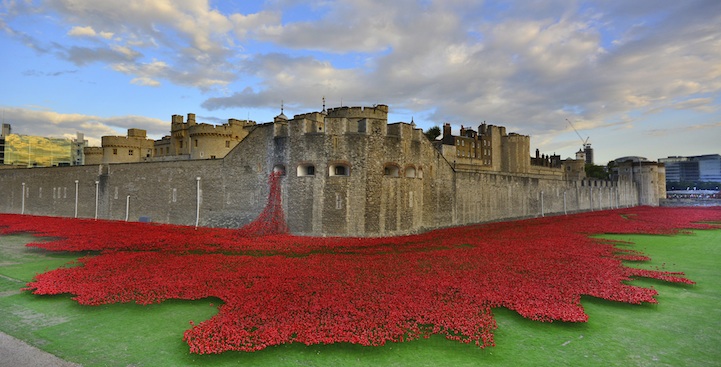
AOC shares an extraordinary installation in London called ‘Blood Swept Lands and Seas of Red’. Estimates are that over four million people will see the installation of 888,248 handmade poppies, each representing a person who died during World War One, before the last poppy is planted on Armistice Day, November 11.
16 acres of clay poppies commemorating blood spill out and around the Tower of London in a magnificent tribute individually assembled by volunteers under the direction of artist Paul Cummins working with site design by Tom Piper. Ninety tons of steel comprise the stems of the poppies, which appear to be floating over the moat or pouring out of a tower window.
Guardian art critic Jonathan Jones questioned the beauty of the installation by calling it an artistic cop-out and a failure to grasp and communicate the grim realities of one of the biggest internaitonal conflicts in human history.
In spite of the mention of blood in its title, this is a deeply aestheticised, prettified and toothless war memorial. It is all dignity and grace. There is a fake nobility to it, and this seems to be what the crowds have come for – to be raised up into a shared reverence for those heroes turned frozen flowers.
Volunteers on the project respond with their own thoughts.
The sheer scale and spread of poppies is stunning, and knowing they represent a minority of overall deaths is deeply disturbing. The futility of the war is rammed home with every poppy hammered into the ground. “What good did their deaths do?” was asked again and again as we planted. “What have we learned from it?” was another.
Rather than create the kind of divisions that seem to pass for political ideology these days, this exhibit has the power and significance to tap into what connects us as humans. To say it is a platform for the likes of Ukip, that it is jingoism and nationalism made reality, that it somehow means the war was an OK thing, shows Mr Jones has failed to understand it. He is clearly devoid of emotion and insight, unlike many, many of the people who either visit or volunteer.
Designer of the installation, Tom Piper said, “It does look very beautiful, but people are beautiful and our human life force is beautiful. So it is a good way of getting people to contemplate all this loss of life.”